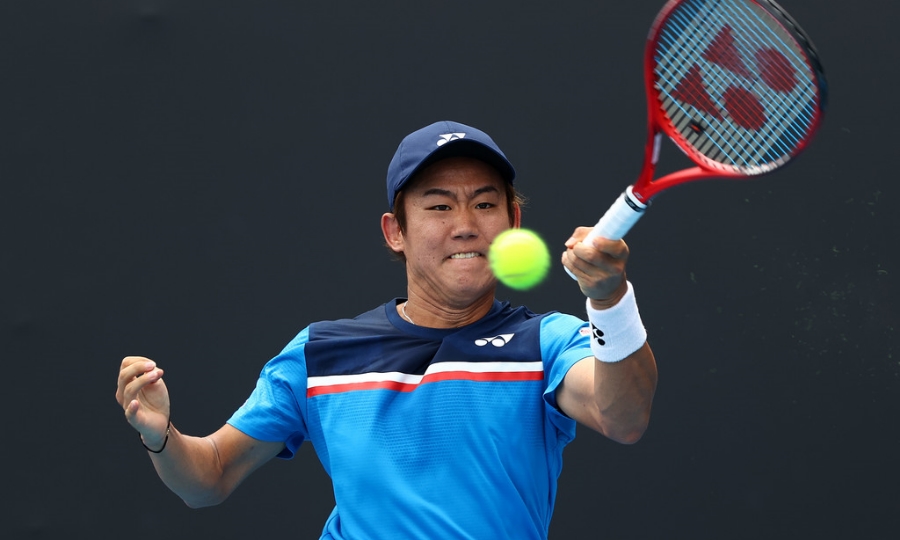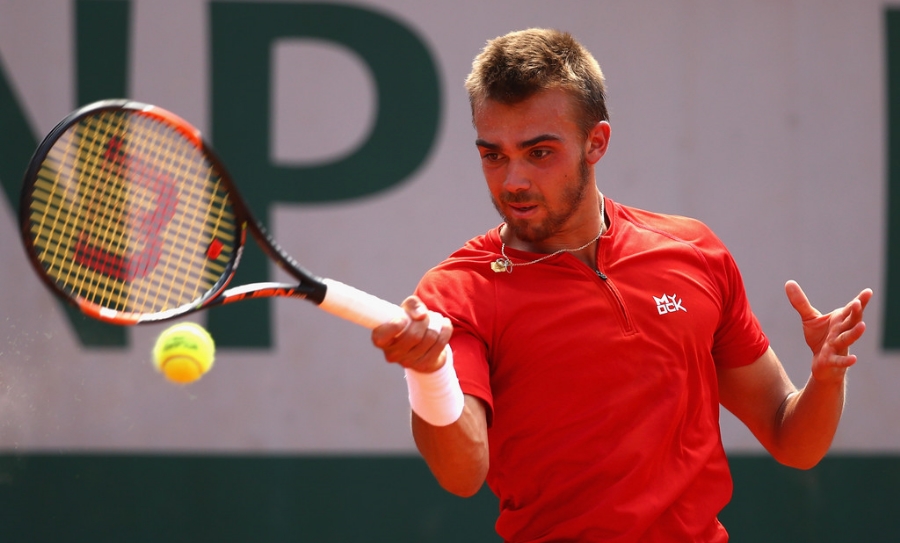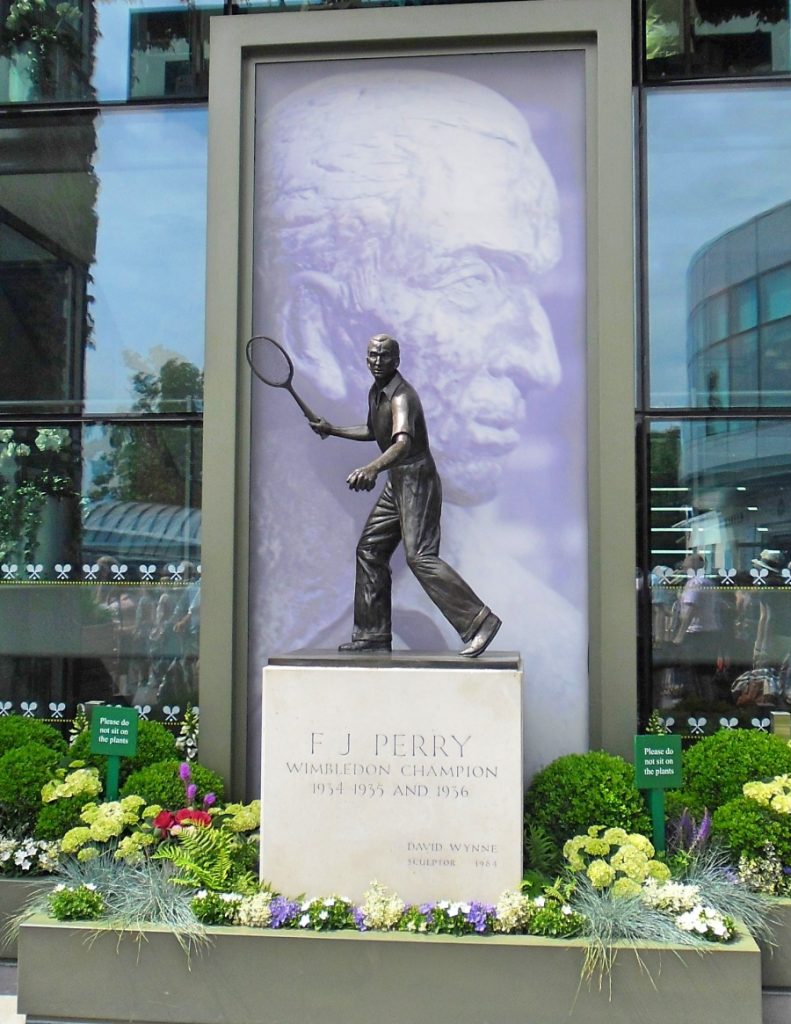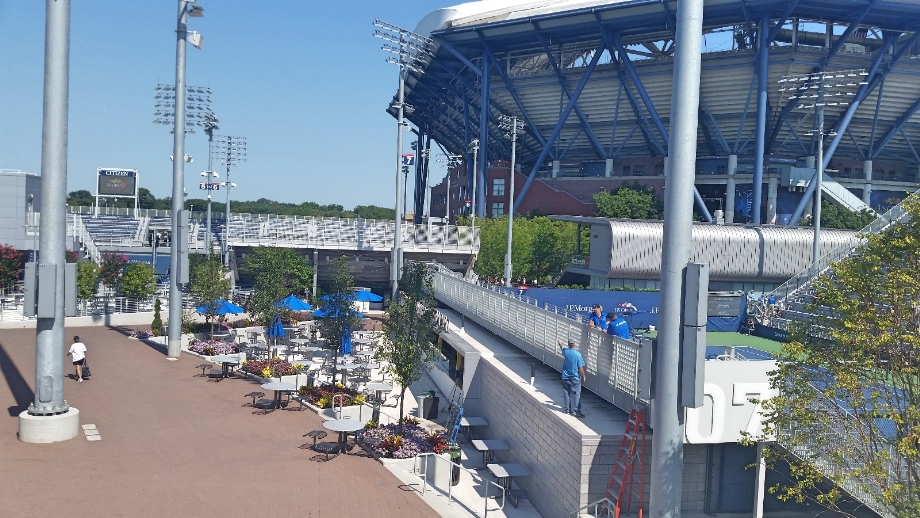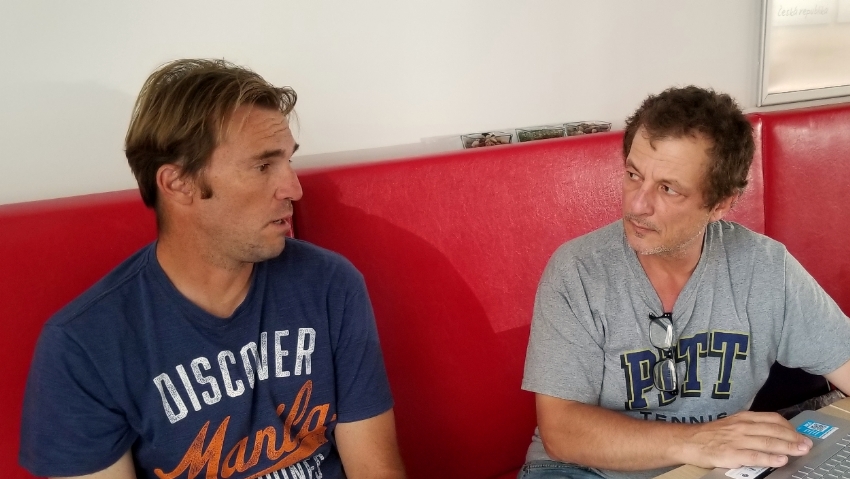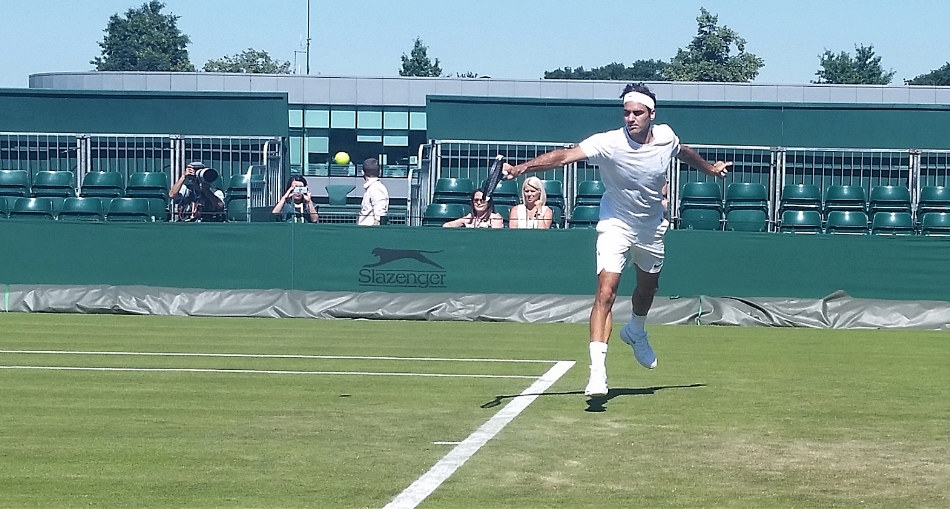After about an hour-long rain delay on the outside courts at Roland Garros on Monday, the opening match on Court 9 pitting the 19th-seed Félix Auger-Aliassime of Canada against the Japanese player Yoshihito Nishioka, ranked no.52 in the ATP, began under gray, cloudy skies, and cold temperatures.
It took about 4 games – a blank hold featuring two aces and a subsequent break to go up 3-1 – before Auger-Aliassime’s day at the office turned just as gloomy as la météo à Paris.
Auger-Aliassime tried to play aggressively from the baseline (his usual Plan A), hitting mostly deep down the middle of the court (not necessarily usual), with the occasional inside-out/in forehand mixed in, while Nishioka adopted a park-4-meters-behind-the-baseline outlook, perhaps out of respect for Auger-Aliassime’s ability to generate power off his ground strokes, running balls down and sending them back deep, intermittently stepping forward to accelerate on the backhand side and catch his opponent off-balance. Since neither player was too keen on coming to the net to finish points (more on this later), it resulted in the outcome of the match being dependent on both players’ consistency.
Neither player clicked on all cylinders in terms of keeping the unforced-error count low, except that one’s engine sputtered a lot more frequently than the other’s did. A ton more!
In the first two sets alone, Auger-Aliassime committed a total of 33 unforced errors as opposed to Nishioka’s 18 (my own count). To make matters worse for the Canadian, his errors often came in sequences of a few points in a row at crucial junctures in the match, whereas Nishioka, while also susceptible to erring in this match, was stingier in the timing of his errors, only a couple of them coming on important points. If I sound like I am describing an average-quality match at best, that is indeed my intention, and this is coming from a fan of both players.
I accept that on clay the outcome relies less on winners than errors committed, but this was a match where one player did just enough to steadily advance on third gear (read: not challenged to shift to fourth or fifth) while the other made no adjustments to his sputtering engine.
As noted above, Auger-Aliassime did build a 3-1 lead early in the match, but that was largely due to Nishioka’s mediocre start on his backhand (five unforced errors on that wing up to that point), which is usually his stronger side.
And this brings me to the other point I would like to make from Auger-Aliassime’s perspective with regard to this straight-forward 7-5 6-3 6-3 losst. At 3-1 up, 0-15 on his serve, Félix had a great chance to attack a short return by Nishioka (one among many such opportunities throughout the match). He struck a solid backhand that put Nishioka on the run, but he opted to step back to the baseline. A rally ensued and it ended with Nishioka hitting a sizzling backhand down-the-line winner. Two points later at 15-30, the same scenario repeated with Nishioka hitting a short return, giving a sitter to Félix, one that he chose once again not to follow to the net. He came in later in that rally on a less convenient shot and got passed.
Nishioka eventually broke serve and equalized at 3-3. In that seventh game at 0-15, Auger-Aliassime passed up yet another chance to attack on Nishioka’s short return and decided to come in on the next shot, after Nishioka had recovered to the middle of the court, and got passed again.
In fact, the only four points Félix lost at the net in the first set were all clean passing shots by Nishioka, two of them because Auger-Aliassime picked the wrong spots and left a target open at which Nishioka could aim (and Nishioka loves targets). I compare that to the 10 points that he won on other approaches in this set, seven of them coming as the result of direct winners from approaches or volley put-aways, and I cannot help but wonder what would have happened had he elected to do otherwise on chances he passed up to follow his great shots to the net, especially those he got to hit from way inside the baseline. Plus, many of them came on short returns by Nishioka, setting the stage for a 1-2 punch, an otherwise favorable play for Félix.
This pattern described above took place again and again throughout the first two sets – I will mainly focus on the third set in this piece, because the second set was a rehash of the first and by the time the third began, Auger-Aliassime appeared discouraged and quickly fell behind a break early in the set. Side note: This reluctance to integrate coming forward into one’s game is something that a vast majority of today’s up-and-comers need to reconsider if they intend to reach the elite section of the ATP rankings. For most, it is a facet of the game that is visibly lagging behind in comparison to their other assets.
One reason why I am beating this particular drum is precisely because Félix was having a nightmarish day at the office with regard to unforced errors committed from his ground strokes alone. Every player has these days every now and then, including top-notch ones, where you simply cannot seem to find your timing no matter hard you try.
One way to cut down on those errors, is to resort to basic safety tactics such as bringing an extra layer of security to your shot, in other words, hit higher over the net, play to the middle of the court away from the lines, etc. Another way is to adopt a Plan B that depends less on those badly calibrated shots du-jour in your game. In Auger-Aliassime’s case, on a day like this, this would mean that he’d look to cut the point short instead of engaging in long rallies and taking advantage of his opponent’s short balls and come forward, in order to not only bring the heat to your opponent and collect errors, but also to avoid possible errors resulting from long baseline exchanges.
If any of this were not clear in the first nine games, it certainly became crystal clear in the last 10 minutes of the first set. Auger-Aliassime led 5-4, and 0-30 on Nishioka’s serve, only to make his 11th unforced error of the set (6th on his backhand), and then, win only three out of the next 14 points to lose the set 5-7. He added three more unforced errors (and a double fault) in the 5-5 game and chipped in two more in the next one, for a total of 16 unforced errors in the set.
He would up that count by one for the second set, and made no modifications to his game plan. You don’t want to take my word for it, just watch the second and third points of the very first game and that should tell you all you need based on what I’ve noted previously. I thought that when Félix took the bathroom break at the end of the first set, he would settle down and perhaps shift his tactics, but that first game proved otherwise.
Credit should be given to Nishioka for recognizing his opponent’s struggles and sticking to what works for him although, as I mentioned before, he was not exactly pristine in the unforced-error count himself (10 in the first set, 8 in the second). He did however tidy up in the important points over the last two sets, and his two critical errors in the first were negated thanks to Félix generously returning the favor in the ensuing points.
This is not a devastating loss for Auger-Aliassime by any means. Nishioka presents a rough challenge in the opening round of a Major for most of his colleagues, not to mention a particularly difficult match-up for Félix because he is fast, he can handle pace, and he can consistently keep his ground strokes deep. His forehand carries a considerable spin while his backhand is much flatter, allowing him to give a different look to his opponent shot after shot. I am not sure that Félix enjoys facing opponents who can keep a steady flow of deep strokes coming his way on clay, pinning him to the baseline and beyond (his two losses to Laszlo Djere in 2019 come to mind, among others).
In the second round, Nishioka will take on the wild-card participant Hugo Gaston of France, making the possibility of a first-ever appearance in the third round at Roland Garros a realizable goal.
